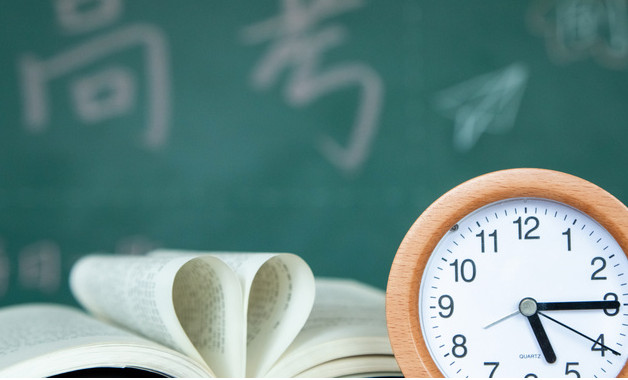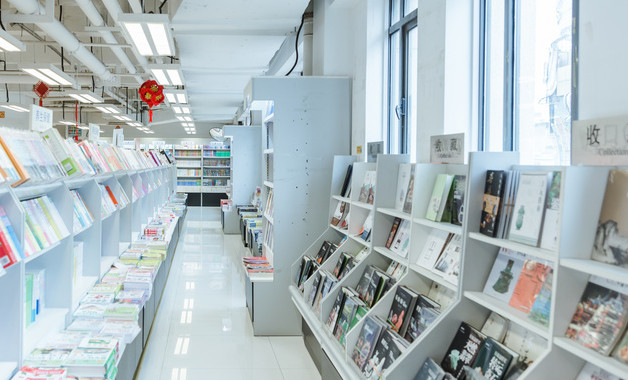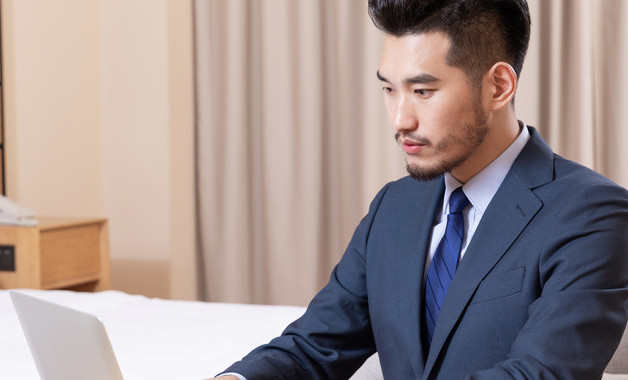
第1篇 豫园的导游词
阅读小贴士:本篇共计2102个字,预计看完需要6分钟,共有283位用户收藏,18人推荐!
早上好!女士们、先生们。大家昨晚睡提好吗?好极了。真对不起,昨晚行李送迟了。因为行李车坏了,我们只得再要了一辆。顺便问一下,你们行李打开了没有?怪不得外面阳光明媚。我们导游常说:”客人把阳光装在包里带来了。”为此我谢谢你们。好言归正传。早餐的我已宣布过日程安排,今天我们先去海老城,也就是豫园、豫园商场的所在地。
我们的车正行驶在外滩。诸位左侧就是著名的黄浦江。我们以后会到这儿来的。
为了节省时间,在没到豫园之前我先讲些中国园林和豫园的情况。
在中国,园林被分为三大类:皇家园林、私家园林和寺庙园林。豫园属于私家园林。中国园林有许多技巧,比如借景、障景等等。不过它们都由四个基本因素组成。这四个因素是水、植物、建筑和假山。大多数的私家花园是在江南,就是因为这儿多水源和适宜做假山的石。豫园是四百多年前明朝时建。园主姓潘,是个大官。他建此园是取悦于双亲,让他们安享晚年。所以豫园的”豫”字就取其豫悦之意。可惜的是他父母末能眼见豫园落成就去世了。清末,潘家衰弱,其后代变卖此园于当地行会。豫园之所以成为名胜,还另有一原因。1853年,上海爆发小刀会起义,园内一厅堂曾被用作指挥部。今天豫园是个必游之地。所以我建议到了那儿我们千万不要走散,最好大家寸步不离,好吗?
这儿是停车场。万一有人走散,请记住车号最后三个数字是121。我想最好不要发生这类事。我会举着小红旗,你们全陪张先生会殿后。大家准备好了没有?我们上路吧。下车时请注意自行车。
女士们、先生们,这座就是著名的九曲桥。为什么是九呢?因为是阳数最高的数。走在桥上,逗留时间就长。还可以从不同角度观赏风景。还有,据说鬼怪只能走直线,所以你不必为遇到鬼怪而担心。
在桥的中间,有座亭子,始建于清朝,大约在80多年前被改作一茶馆。老人们喜欢早晨来此,会会朋友,沏上一壶茶,聊聊天儿。一般他们喝的都是一种绿茶,叫做”龙井”。这个茶馆也是外国首脑常来之地。比如1986年英国女王伊丽莎白二世来上海,也亲临茶馆喝了茶。
确实,能在这儿喝上一壶也是一种享受。试想一下,在一个夏日,你来到茶馆,临窗而坐,俯视着开满荷花的绿池。迎面吹来阵阵凉风。在悠雅的江南丝竹声中,你提起紫砂壶,慢慢地呷上一口微温的”龙井”茶。你会觉得飘然若仙。
你们也想喝一壶?对不起,我还是不能让你们去。等我们看完豫园再做决定,行不行?
这儿就是豫园的入口。当你走进一个私家花园,视线总会被什么东西挡住,有时是假山,有时是这肃的照壁。这是园林一技巧,称之为障景。不让你一日了然,却让你看到一部分,然后才达到”步移景易”的效果。
这座堂叫”仰山堂”。大家知道,上海位于一冲积平原,市内无山、无林。所以此”山”就指对面那座假山。它高12米,重80吨。它过去乃至今天一直是个奇迹。因为四百多年前没有水泥和熟石膏,人们就用烹煮过的糯米,加上明矾和石灰,把石块粘起来。至今安然无恙。看见山顶的亭子吗?四百年前,这是上海城最高点。从那儿可看到黄浦江上的渔船、帆影,可这些今天只能在电影中见到了。你也仅能看见他们上移的头顶。因为盘旋的小径皆被树、石遮住。这实在是园艺大师张南阳的杰作。也被公认是本地最佳假山。
在假山之后,有座龙墙。这是本园一特色。总共有五条龙墙。这边走,我要带你们去个地方,那儿能清楚地看见另一条龙墙。
女士们、先生们,这就是我刚才说的那条龙墙。龙实际上是想像出来的动物。我们称自己为龙的传人。不知道大家是否读过赛珍珠的《龙籽》。如果看过的话,这儿很多东西令你觉得熟悉。请看这条龙,你会发觉这是个多种动物的综合体。你看它头似牛,眼似虾,角似……我看不太像牛。我们通常说角似鹿,身似蛇,鳞似鱼,爪似鸡或者鹰。请告诉我,你们看见几个趾。三个对。但一般龙应有五趾。为什么是三个呢?其中有一故事。以前,只有皇帝和皇室人员才配有龙的图案。园主潘允端用了龙做墙,他有野心。不知怎么,皇帝得知此事,便派人来调查。潘允端得悉后,立即令人敲下两个趾。当朝延官吏一到,园主说:”瞧,这本不是龙,只有三趾。”真是个聪明人,不然他性命难保。
你们说想拍一集体照。我看以龙墙为背景,这可是最佳的地方,我来替你们拍,别忘了说”cheese”。
这儿我们可看见三块石头。中间那块称作”玉玲珑”。这并非是玉,但是挺有名,叫太湖石,外型是由水侵蚀而成。这原来是给宋微宗的贡品。宋微宗广收奇花异石,称”花石纲”。可怎么会到这儿来的呢?原来,在运往当时京都遗失了。多年之后,又成了地地方官绅的玩物。后来他把该石送给潘允端做嫁妆,因为潘的兄弟娶了他女儿。玉玲珑因有”瘦、透、皱、漏”等特点而著称。假如你自上而下倒水。它72孔孔孔犹如小瀑布;如你在下方燃香,它72孔孔孔烟香缥缈,非常美丽。园主以前常凝视此石多时,留连忘返。这也是园林功效之一,一个景物使你沉思,结果达到情晚合一的境界。
豫园之游就到此结束,希望胸们喜欢它。最后,大家必须做出选择:是喝茶还是购物。我看,还是举手表决。有多少人想品茶?哈,全都想去?!什么?我愿不愿去?说实话,这正合我意。那么我们还等什么呢?大家走吧!
第2篇 豫园的导游词
阅读小贴士:本篇共计6140个字,预计看完需要16分钟,共有108位用户收藏,18人推荐!
豫园,位于上海市老城厢的东北部,北靠福佑路,东临安仁街,西南与上海老城隍庙毗邻,是江南古典园林,始建于明代嘉靖、万历年间,占地三十余亩。下面是小编收集整理的上海豫园导游词范文,欢迎借鉴参考。
上海豫园导游词(一)
早上好!女士们、先生们。大家昨晚睡提好吗?好极了。真对不起,昨晚行李送迟了。因为行李车坏了,我们只得再要了一辆。顺便问一下,你们行李打开了没有?怪不得外面阳光明媚。我们导游常说:”客人把阳光装在包里带来了。”为此我谢谢你们。好言归正传。早餐的我已宣布过日程安排,今天我们先去海老城,也就是豫园、豫园商场的所在地。
我们的车正行驶在外滩。诸位左侧就是著名的黄浦江。我们以后会到这儿来的。
为了节省时间,在没到豫园之前我先讲些中国园林和豫园的情况。
在中国,园林被分为三大类:皇家园林、私家园林和寺庙园林。豫园属于私家园林。中国园林有许多技巧,比如借景、障景等等。不过它们都由四个基本因素组成。这四个因素是水、植物、建筑和假山。大多数的私家花园是在江南,就是因为这儿多水源和适宜做假山的石。豫园是四百多年前明朝时建。园主姓潘,是个大官。他建此园是取悦于双亲,让他们安享晚年。所以豫园的”豫”字就取其豫悦之意。可惜的是他父母末能眼见豫园落成就去世了。清末,潘家衰弱,其后代变卖此园于当地行会。豫园之所以成为名胜,还另有一原因。1853年,上海爆发小刀会起义,园内一厅堂曾被用作指挥部。今天豫园是个必游之地。所以我建议到了那儿我们千万不要走散,最好大家寸步不离,好吗?
这儿是停车场。万一有人走散,请记住车号最后三个数字是121。我想最好不要发生这类事。我会举着小红旗,你们全陪张先生会殿后。大家准备好了没有?我们上路吧。下车时请注意自行车。
女士们、先生们,这座就是著名的九曲桥。为什么是九呢?因为是阳数最高的数。走在桥上,逗留时间就长。还可以从不同角度观赏风景。还有,据说鬼怪只能走直线,所以你不必为遇到鬼怪而担心。
在桥的中间,有座亭子,始建于清朝,大约在80多年前被改作一茶馆。老人们喜欢早晨来此,会会朋友,沏上一壶茶,聊聊天儿。一般他们喝的都是一种绿茶,叫做”龙井”。这个茶馆也是外国首脑常来之地。比如1986年英国女王伊丽莎白二世来上海,也亲临茶馆喝了茶。
确实,能在这儿喝上一壶也是一种享受。试想一下,在一个夏日,你来到茶馆,临窗而坐,俯视着开满荷花的绿池。迎面吹来阵阵凉风。在悠雅的江南丝竹声中,你提起紫砂壶,慢慢地呷上一口微温的”龙井”茶。你会觉得飘然若仙。
你们也想喝一壶?对不起,我还是不能让你们去。等我们看完豫园再做决定,行不行?
这儿就是豫园的入口。当你走进一个私家花园,视线总会被什么东西挡住,有时是假山,有时是这肃的照壁。这是园林一技巧,称之为障景。不让你一日了然,却让你看到一部分,然后才达到”步移景易”的效果。
这座堂叫”仰山堂”。大家知道,上海位于一冲积平原,市内无山、无林。所以此”山”就指对面那座假山。它高12米,重80吨。它过去乃至今天一直是个奇迹。因为四百多年前没有水泥和熟石膏,人们就用烹煮过的糯米,加上明矾和石灰,把石块粘起来。至今安然无恙。看见山顶的亭子吗?四百年前,这是上海城最高点。从那儿可看到黄浦江上的渔船、帆影,可这些今天只能在电影中见到了。你也仅能看见他们上移的头顶。因为盘旋的小径皆被树、石遮住。这实在是园艺大师张南阳的杰作。也被公认是本地最佳假山。
在假山之后,有座龙墙。这是本园一特色。总共有五条龙墙。这边走,我要带你们去个地方,那儿能清楚地看见另一条龙墙。
女士们、先生们,这就是我刚才说的那条龙墙。龙实际上是想像出来的动物。我们称自己为龙的传人。不知道大家是否读过赛珍珠的《龙籽》。如果看过的话,这儿很多东西令你觉得熟悉。请看这条龙,你会发觉这是个多种动物的综合体。你看它头似牛,眼似虾,角似……我看不太像牛。我们通常说角似鹿,身似蛇,鳞似鱼,爪似鸡或者鹰。请告诉我,你们看见几个趾。三个对。但一般龙应有五趾。为什么是三个呢?其中有一故事。以前,只有皇帝和皇室人员才配有龙的图案。园主潘允端用了龙做墙,他有野心。不知怎么,皇帝得知此事,便派人来调查。潘允端得悉后,立即令人敲下两个趾。当朝延官吏一到,园主说:”瞧,这本不是龙,只有三趾。”真是个聪明人,不然他性命难保。
你们说想拍一集体照。我看以龙墙为背景,这可是最佳的地方,我来替你们拍,别忘了说”cheese”。
这儿我们可看见三块石头。中间那块称作”玉玲珑”。这并非是玉,但是挺有名,叫太湖石,外型是由水侵蚀而成。这原来是给宋微宗的贡品。宋微宗广收奇花异石,称”花石纲”。可怎么会到这儿来的呢?原来,在运往当时京都遗失了。多年之后,又成了地地方官绅的玩物。后来他把该石送给潘允端做嫁妆,因为潘的兄弟娶了他女儿。玉玲珑因有”瘦、透、皱、漏”等特点而著称。假如你自上而下倒水。它72孔孔孔犹如小瀑布;如你在下方燃香,它72孔孔孔烟香缥缈,非常美丽。园主以前常凝视此石多时,留连忘返。这也是园林功效之一,一个景物使你沉思,结果达到情晚合一的境界。
豫园之游就到此结束,希望胸们喜欢它。最后,大家必须做出选择:是喝茶还是购物。我看,还是举手表决。有多少人想品茶?哈,全都想去?什么?我愿不愿去?说实话,这正合我意。那么我们还等什么呢?大家走吧!
上海豫园导游词(二)
豫园位于上海市老城厢的东北部,北靠福佑路,东临安仁街,西南与上海老城隍庙毗邻,是江南古典园林,名胜古迹和游览胜地。
园内有江南三大名石之称的玉玲珑、1853年小刀会起义的指挥所点春堂,园侧有城隍庙及商店街等游客景点。
豫园在1961年开始对公众开放,1982年被国务院列为全国重点文物保护单位。
豫园原是明代的一座私人园林,始建于嘉靖、万历年间,截止2022年已有四百余年历史。
园主人潘允端,曾任四川布政使。其父潘恩,字子仁,号笠江,官至都察院左都御史和刑部尚书。潘家是当时上海的望门大族。1553年(明嘉靖三十二年),长达九里的上海城墙建成,使及东南沿海的倭患逐渐平息,二十余年来生命财物经常受到威胁的上海人民稍得安定,社会经济得到恢复并开始繁荣。士大夫们纷纷建造园林。
潘恩年迈辞官告老还乡,潘允端为了让父亲安享晚年,从1559年(明嘉靖己未年)起,在潘家住宅世春堂西面的几畦菜田上,聚石凿池,构亭艺竹,建造园林。经过二十余年的苦心经营,建成了豫园。豫有平安、安泰之意,取名豫园,有豫悦老亲的意思。
豫园当时占地七十余亩,由明代造园名家张南阳设计,并亲自参与施工。古人称赞豫园奇秀甲于东南,东南名园冠。
潘允端晚年家道中落。1601年(明万历二十九年)潘允端去世,潘氏家庭日趋衰微,无力承担园林修缮和管理所需的巨大开支。明朝末年,豫园为张肇林所得。其后至1760年(清乾隆二十五年),为不使这一名胜湮没,当地的一些富商士绅聚款购下豫园,并花了二十多年时间,重建楼台,增筑山石。因当时城隍庙东已有东园,即今内园,豫园地稍偏西,遂改名为西园。上海豫园古楼阁景观
1860年(清咸丰十年),太平军进军上海,满清政府勾结英法侵略军,把城隍庙和豫园作为驻扎外兵场所,在园中掘石填池,造起西式兵房,园景面目全非。清光绪初年(1875年)后,整个园林被上海豆米业、糖业、布业等二十余个工商行业所划分,建为公所。至解放前夕,豫园亭台破旧,假山倾坍,池水干涸,树木枯萎,旧有园景日见湮灭。
1956年起,豫园进行了大规模的修缮,历时五年,于1961年9月对外开放。现豫园占地三十余亩,楼阁参差,山石峥嵘,树木苍翠,以清幽秀丽,玲珑剔透见长,具有小中见大的特点,体现出明清两代江南园林建筑的艺术风格。
豫园1959年列为市级文物保护单位,豫园于1961年开始对公众开放,1982年2月由国务院公布为全国重点文物保护单位。
萃秀堂建于清乾隆二十五年(1760年),深隐于大假山北麓,面临峭壁,北倚高墙,古木交柯,佳卉盈庭,环境清幽淡雅,静坐堂中推窗便可近观大假山景。现设古玩店。
渐入佳境语出《晋书·顾恺之传》,这里有引人入胜之意。游廊石板铺地,中为小桥,两侧有鹅项靠,可以坐观山光水色。廊中间竖一太湖石立峰,高约2.3米,亭亭玉立,故名美人腰。
元代铁狮位于渐入佳境游廊前。左雌右雄,铸造于1290年,底座上有款识:章德府安阳县铜山镇匠人赵璋、大元国至元廿七年岁次庚寅十月廿八日。
大假山用数千吨浙江武康黄石建成,由明代著名叠山家张南阳精心设计堆砌,也是他唯一存世的作品。山高约14米,潘允端在《豫园记》中对大假山的评价是:峻颇惬观赏。
仰山堂为五楹,北有回廊,曲槛临池,可以坐憩堂内有录自晋王羲之《兰亭序》的此地有崇山峻岭匾额。卷雨楼名取自初唐诗人王勃《滕王阁》诗句珠帘暮卷西山雨。
三穗堂是清乾隆二十五年(1760年)改建西园时所建,高9米,是园中的主要建筑之一。在清代,这里是官府庆典和宣讲圣谕之处,也是地方上文人士绅聚会活动的场所。
银杏树高达21米,枝叶茂密,相传为建园时园主人手植,已四百多年。
万花楼下四角有梅兰竹菊图案漏窗四幅楼南面有湖石假山。四周多回廊曲槛,廊旁的白色粉墙边,依墙缀以石峰,栽植翠竹。
复廊东端有一小轩,在这里探首俯视则清泉如镜,隔崖相望则石峰壁立,面山对水,有古人观山观水两相宜的情趣,故名两宜轩。北面有建筑名亦舫,形状如古代之船舫。
复廊,中间用墙分隔,两边皆可行走。墙上开设着形状不同的漏窗,从漏窗中左顾楼台掩映,右望溪流峰石,宛如图画小品。廊西端连以方亭,亭中有匾,上题会心不远。
鱼乐榭周围古木参天,凭栏可观池中游鱼。榭前小溪上的隔水花墙体现了江南园林小中见大的特点。小溪长仅数丈,花墙把小溪隔而为二,墙上开设漏窗和半圆洞门。从鱼乐榭旁有一株已度过三百多个春秋的紫藤,每年初春时节,枝条上绽满白色的小花。
和煦堂与点春堂隔水相望,堂呈方形,周围开敞。堂内陈列的一套家具,包括桌、椅、几和装饰用的凤凰、麒麟,都用榕树根制作,已有上百年历史。旁有石蹬通向听鹂亭。
打唱台,也叫凤舞鸾吟。戏台依山临水,台前的垂檐,雕刻细腻,涂金染彩。戏台四面的石柱上,分别有描绘春夏秋冬四季景色的对联。
点春堂东南有湖石假山抱云岩,水石缭绕,洞壑幽深。山上有双层楼阁;上层名快楼,下层称延爽阁。从快楼朝南而下,还有静宜轩、听鹂亭,周围绕以花墙,自成小院。
穿云龙墙位于点春堂西,龙头用泥塑成,龙身以瓦作成鳞片。园中另外还有几处龙墙:大假山后有卧龙,和煦堂西有双龙戏珠,内园可以观前有眠龙,各具特色。
点春堂整座建筑为五开间大厅,扇上雕戏文人物,梁柱花纹造型奇特,饰以金箔。堂后有临池水阁,上有匾额曰飞飞跃跃。点春堂建于清道光初年,曾为福建籍花糖洋货商人在沪祀神议事之所,俗称花糖公墅。小刀会起义时,这里是起义军的城北指挥部,小刀会领袖之一太平天国统理政教招讨左元帅陈阿林在此办公,发布政令,称点春堂公馆。起义失败后,点春堂遭到严重破坏,清同治七年(1868年)又集资重修,历时四载完工。现堂中挂晚清画家任伯年的巨幅国画《观剑图》。画两边是书法家沈尹默书写的对联:胆量包空廓,心源留粹精。堂内还陈列着起义军使用的武器、自铸的钱币日月钱以及发布的文告等文物。
流觞亭,因其两面临水,取《兰亭序》流觞曲水之意。亭侧有三曲板桥,贴水而筑。三曲板桥西是浣云假山。山以湖石堆成,北倚得月楼,西临清泉。山洞盘桓,循洞可达山顶,洞内有泉,涧溪水从洞内流出。
上海豫园导游词(三)
豫园位于黄浦江西岸繁华热闹的上海老城,北靠福佑路,东临安仁街,西面与上海城隍庙和豫园商城邻近,是举世闻名的江南古典园林,闻名中外的名胜古迹和游览胜地。豫园是著名的江南古典园林,豫园始建于明嘉靖年间,有明代四川布政使潘允端所建,至今已有400多年的历史。
一走进豫园就仿佛置身于明末清初之时,随着人流,渐渐的就走进了个大约能容纳近几千余人的小广场,站立在广场间,中央有个扇展,扇面的字画,有的波澜起伏,有的神采飘逸,有的柔中有刚。
环顾四周那8层的天裕楼楼顶是凝晖楼,人们站在这画栋雕梁的阁楼上眺望,欣赏这如诗入画的美景正面是华宝楼,每当逢年过节人们就欢坐此地观赏楼阁好戏,身后是合业楼也就是有名的小吃广场。小广场东面是城隍庙,每年的“三巡日”,即城隍神出巡的日子,上海城内居民家中十室九空,居民全部在城隍娘娘圣诞(三月二十八),上海城隍庙内包括庙附近的商家全部张灯结彩,为城隍神欢庆圣诞,庙内香火旺盛,流光异彩,璀璨瑰丽,宛若仙境。若是恰逢假日,更会形成游客云集,行人如织,人气鼎盛的场面。
随着人流我来到城隍庙对面的个大门,大门旁的两根石柱上挂着一幅邵华泽的对联:古邑独钟潘公明神,熔铸百年精华;申城偏爱老庙新宇,再造世纪辉煌。
这时我已陶醉在这美不胜收的景色中了,不知不觉的来到了九曲桥,桥上人流熙熙攘攘,桥下鱼翔底,静静的湖面上布满了碧翠欲滴的荷叶,像是插满了密密麻麻的翡翠扇似的,把湖面盖得严严实实。湖面上浮游着斑斓的色彩,好像谁在下面撒下一串珍珠。当微风徐徐地吹过,湖面上微微荡起的细碎涟漪,仿佛一匹新缎折出的轻皱,格外绚丽悦目。
园里的围墙,蜿蜒起伏,顶上饰以龙头,并用瓦片组成麟状,象征龙身,一垛墙如居龙游动,称为龙墙。在我国古代,龙是封建帝王的象征,是不能随便用在建筑物上作装饰的。豫园在建龙墙时已是清末,而且“龙”只有三,四个爪子,是为了避去“五爪金龙”之嫌。点春堂是1853年上海小刀会起义军城北指挥所。玉玲珑是立在玉华堂前的一块高约4米、玲珑透剔的巨石。据说是宋代花石岗遗物。豫园的主要建筑是三穗堂,建筑宽敞,是当年主人举行筵宴的地方。此外,园中值得观赏的还有一对元代铁狮,300多年的老藤和一株四百多岁的银杏。
它那古老悠久的历史渊源,色郁味醇的民族风格,使得豫园成为上海最为著名的旅游景区。
上海豫园导游词(四)
豫园是著名的江南古典园林,全国重点文物保护单位。豫园始建于明嘉靖年间,有明代四川布政使潘允端所建,至今已有400多年的历史。1853年上海小刀会起义时,豫园点春堂曾作为起义军的城北指挥部,现堂内陈列着当年小刀会的武器、自铸的钱币,以及发布的文告等文物。解放后政府对豫园进行了大规模的修缮,1961年正式对外开放。
静观大厅亦称“晴雪堂”,是内园主要厅堂,造得雕栋画梁,轩昂高敞。堂面阔5间,进深3间,厅前有两尊石狮,厅内有“静观”和“灵沼峙”两块贴金匾额。静观之名,取古语“静观万物皆自得”,“动观流水静观山”之意。大厅对面奇峰林立,堆叠多姿,或如三官献寿,或如白鹿望月,或如蝙蝠飞舞,或如九狮盘球。据说静静观之,能辨出100多种动物形象。石峰间有许多百年古树。静观东面一小院落,中有池水一泓,两侧曲廊回绕,树荫蔽日,修竹潇洒挺拔,环境幽深。
观涛楼位于静观大厅西南侧,又称“小灵台”,三层全木结构,高10余丈,清时为城东最高建筑物。昔年在此登高可观赏“沪城八景”之一“黄浦秋涛”。
还云楼、延清楼面对静观大厅,东西相连,为串楼形,并可通向观涛楼和船厅,还云楼内横匾“还云”,为清末上海名绅姚文?题识。还云楼原为上海钱业公所产业,豫园、内园屡遭战火破坏,而此楼却免遭劫,大有“手挥丝桐,目送还云,西山爽气,在我袖中”之感。
耸翠亭耸立于观涛楼东面假山上,双层亭阁,底层置石桌、石凳,周围林木青翠。亭内一匾“灵木披芳”。
可以观位于静观大厅东,小型方厅,精致幽静,炎夏时分外凉爽。厅前有砖雕《郭子仪上寿图》,旁有泥塑龙墙,北接“洞天福地”凤凰亭,南连“别有天”,墙上有《重修内园记》等石碑,记载内园历史。
第3篇 豫园的导游词
阅读小贴士:本篇共计859个字,预计看完需要3分钟,共有144位用户收藏,11人推荐!
亲爱的团友们,那我们现在即将到达的是豫园游览区。
豫园游览区位于上海市中心城区东南部黄浦区原老城厢境内,世大上海久负盛名的游览区。它的主要景点有豫园、豫园旅游商城、城隍庙、上海老街。它的周边景点主要有沉香阁、文庙、小桃园清真寺、白云观、大境阁、慈修庵等。
豫园游览区的肇始,要上溯到元代了建霍光行祠,明永乐年间,上海县将城隍秦裕伯“请进”行祠,上海始有城隍庙。明万历年十五年,潘允端间续建成豫园。至清嘉庆年间,城隍庙庙园既有东园(内园),又含豫园,集玩、吃、购之大全,有“不到城隍庙等于没有到上海”之说。但鸦片战争后,城隍庙地区几经破坏,破败不堪。建国后,人民政府大力修复豫园。“文革”中,城隍庙香火熄灭,殿堂变“老庙黄金”。20世纪80年代后,豫园两度重点修缮,城隍庙归还道教,并投资修建了仿明清建筑的豫园旅游商城,还在方浜中路修建仿明末清初建筑的上海老街。豫园游览区于1995年获20世纪“90年上海十大新景观”的美誉。
豫园游览区总体来讲具有浓郁的传统文化气息,最大的特色是一个“古”字。
说到豫园,那就不得不提提它的六大文化了。
一是园林文化。上海老城厢自明嘉靖年间以来,社会安定,达观显贵们喜山水园林,“园林情结”蔚然成风,于是有了豫园等20余处园林。
二是宗教文化。豫园游览区及其近旁寺庙观堂十分集中,形成儒教、佛教、道教、伊斯兰教、天主教、基督教诸教会聚一处的“奇观”,形成罕见的宗教文化现象。如:儒、道、佛文化的豫园、道教的城隍庙等。
三是建筑文化。上海建城已有七百余年了,可以说老城厢豫园游览区是一处明、清、民国时期的住宅建筑的博物馆。老城厢内明代潘允端的世春堂、徐光启的九间阁等都是古宅中的珍宝。
四是商业文化。豫园游览区有“购物天堂”的美誉,商品有“小、土、特、多”的特点,堪称小商品王国。
五是美食文化。豫园游览区既有代表上海本帮风味的老饭店,又有会聚各地风味的和丰楼,更有驰名中外的名特小吃,是著名的“小吃王国”。
第4篇 豫园的导游词
阅读小贴士:本篇共计10389个字,预计看完需要26分钟,共有126位用户收藏,25人推荐!
豫园(yu garden)位于上海市老城厢的东北部,北靠福佑路,东临安仁街,西南与上海老城隍庙毗邻,是江南古典园林,始建于明代嘉靖、万历年间,占地三十余亩。下面是关于豫园英文导游词范文,希望对大家有帮助!
豫园英文导游词
location:
yuyuan garden, located in the southern part of shanghai, is a famous classic garden. it is characteristic of the architectural style of the ming dynasty.
history:
1. pan yunduan, once an official of sichuan province, there is another saying that he was a treasurer, had the garden built to please his parents. the garden’s name “yu” means “pleasing one’s parents”.
2. the construction started in 1559 but went on and off for lack of money and did not complete until twenty-eight years later.
3. some businessmen bought it at a low price and later make it the city god temple’s west garden. during the opium war and the taiping revolution, it was occupied and e_perienced a lot of disasters, so it lost much of its former grandeur. after the liberation of shanghai, the people’s government makes many renovations to yuyuan garden and it opened to public at last in 1987 with a totally new look.
main spots:
before entering:
there is a beautiful lotus pond. across the pond is a bridge with a pavilion in the middle which is called the mid-lake pavilion. it was rebuilt in 1784 and was converted into a teahouse 80 years ago. the old teahouse is one of the most famous in shanghai, and was visited by queen elizabeth ii and bill clinton among others.
by the teahouse is a nine zigzag bridge.
don’t miss the mid-lake pavilion teahouse ne_t to the entrance of the yuyuan gardens and now one of the most famous teahouses in china, visited by queen elizabeth ii and bill clinton among others.
si_ scenery area:
one: the huge rockery scenic area.
zigzag bridge:
a zigzag bridge is one method for garden building.
it slows down visitors’ pace so that they may enjoy the scenery leisurely and it also enables them to have a different view whenever they make a turn.
why nine zigzag? it is because “nine” is the biggest digit before ten and is a lucky number.
on special occasions such as the lantern festival, which falls on the 15th of january of the lunar calendar, celebrations are held in the vicinity, giving rise to much hustle and bustle.
it was a private garden in the southeast of shanghai, with a history of more than 400 years. the garden features more than 30 halls and pavilions such as spring hall, chamber for gathering the rain and pavilion for viewing frolicking fish. they look out on pools filled with multicolored carp and lotus, artificial but climbable mountains, a grand rockery, dragon-shaped walls and winding corridors.
the owner of the garden, yunduan pan, once a treasurer of sichuan province in the ming dynasty, had the garden built after the imperial type in beijing to please his parents in their old age. hence the name of the garden "yu", which means "pleasing one's parents".
the construction started in 1559 but went on and off for lack of money and did not come to completion till twenty years later. unfortunately, pan's father did not live to see the garden completed. what's more, the pans went down the drain and his descendents were eager to sell the garden. some businessmen soon bought it at a low price. then, it was incorporated into the city god temple to become its "west garden", and alter turned into many trade gild offices. in the mid-1800s the society of small swords used the garden as a gathering place for meetings. it was here that they planned their uprising with the taiping revolutioners against the french colonialists. the french destroyed the garden during the first opium war. so, the garden e_perienced repeated calamities in its history and lost much of its former grandeur. but the area was later rebuilt and renovated.
yu garden is divided into si_ parts with many scenic spots: three corn-ear hall and grand rockery; happy fish waterside pavilion and chamber of ten thousand flowers; spring hall and hall of mildness; scenery gathering tower, toasting pavilion and nine-lion study; e_quisite jade stone and the inner garden.
each part of yu garden is separated by a white brick wall, the top of which are decorated with dragons. each part of the park, although divided, has a balance and harmony creating a unity of e_pression.
yu garden is a piece of shanghai past, one of the few old sights left in the city. everyday at least 10,000 people visit the garden. no wonder people say "those who came to shanghai but missed yu garden and the city god temple bazaar can not claim that they have been to the city."
open hour: daily 9:00 a.m. -- 5:30 p.m.
address: 218 anren street, old city
busline: no. 64, no. 24, no. 11, no. 926
three corn-ear hall and grand rockery
let's begin our virtual tour. before entering the garden, you will see a beautiful lotus pond. across the pond is a bridge with a pavilion in the middle. the mid-lake pavilion was rebuilt in 1784 and converted into a teahouse 80 years ago. one of the best in shanghai, the teahouse is a popular place for the elderly people, who enjoy chatting with each other over a cup of tea.
under the teahouse is a nine-zigzag bridge. the bridge is an indispensable part of a chinese garden. it divides up the water space. a zigzag bridge slows down visitors' pace so that they may enjoy the scenery leisurely and it also enables them to see a different view whenever they make a turn. but why nine zigzags? it is because "nine" is the biggest digit before ten and is, therefore, a lucky number. on special occasions such as the lantern festival, which falls on the 15th of january of the lunar calendar, celebrations used to be held in the vicinity, giving rise to much hustle and bustle. yu yuan garden is a small one, only covering an area of 2 hectares but it strikes one as quite large because of its zigzag layout.
this is the three corn-ear hall, the largest and tallest hall in the garden. called the "hall of happiness and longevity" at first, it was a place where the host entertained his guests and held banquets.
there are three plaques in the hall - "mountains and forests in the city" on top, "ling tai jin shi" in the middle and "three-ear corn hall" at the bottom. the top plaque e_presses mr. pan's love for landscape. as shanghai lies in a flat country with no mountains or forests around, he built the garden with plenty of trees and plants and rockeries, hoping to bring the beauties into it. the two words "ling tai" on the middle plaque refers to the high terrace, where the king of zhou dynasty offered sacrifices to his ancestors. the hall was also a place for the gentry to e_plain and study the imperial edicts. after the hall was turned into an office for the rice and bean businessmen, the name was changed into "three corn-ear hall", reflecting the wishes of businessmen for a rich harvest. for the same reason, there are crops and fruits carved on the doors of the hall.
yu yuan garden boasts many lattice windows, which are found in the corridors and on the walls. they were covered by paper of foil of shells 400 years ago instead of glas as they are now. built with a mi_ture of clay, lime and alum, each of them presents a different design. on the windows near the three corn-ear hall are designs of pine, crane and lingzhi herb, which symbolize fortune, wealth, longevity and happiness.
behind the three corn-ear hall stands the yangshan hall (hall for viewing the mountain) built in 1866. opposite the yangshan hall is a beautiful rockery hill which is called grand rockery. designed by chang nanyang, a famous landscape architect, it is a rarity in southern china. while sipping tea with your friends in the hall as the owner did, you can enjoy the rockery hill in front. as is described by the words on the plaque in the hall "high mountain ridges", the 12-metre high rockery hill, dumped with 2,000 tons of rocks, is noted for its steep cliffs and hidden, winding paths. it is no e_aggeration to say that the rockery hill is the crystallization of the wisdom and creativeness of the working people as to move the rocks from 200-kilometre-away wukang in zhejiang province alone was no easy job at all. what is more amazing is that the rocks were stuck together by cooked glutinous rice mi_ed with alum and lime, for at that time cement was not available.
visitors feel as if they were on real mountain ridges once they ascend the rockery covered by trees and flowers and with streams flowing down the slopes into the pond below. the pavilion on the hilltop, the highest point in shanghai 400 years ago, commanded an e_cellent view of the huang pu river dotted by sails and masts. hence the name "pavilion for viewing the river".
behind the rockery is a wall topped with a dragon, called the reclining dragon. there are five dragon walls in the garden, dividing it into si_ different scenic sections.
above the yangshan hall is the "rain rolling tower" with its name derived from the tang dynasty poet wang bo's poem. a verse of it reads "at dusk the pearl-curtain rolls up the rain drifting from western hill." it is true that on the four sides of the hall there used to be pearl-curtains, which gave off a kind of rain-like sound against the wind. while enjoying, in the hall, the e_cellent views of the rockery and pond full of lotus blossoms and goldfish, visitors seem to hear the sound of rain, thus feeling carried away by the poetic surrounding with mountains in the rain.
in yu yuan garden there are many brick carvings, dating back to the qing dynasty, 300 years ago. here are two of them. the one on the left is called "plum wives and crane sons". they are carved on the bricks fired in the kiln. the legend connected with the carving describes lin heqing, a poet in the song dynasty 1000 years ago. mr. lin loved plum and crane as he did his wife and son. hence the saying "plum wives and crane sons". though a great poet, lin heqing fell out of favour. disappointed, he lived in seclusion in a country cottage on the gushan hill in hangzhou. during the twenty years of his stay there, he did nothing other than planting plum trees and raising a crane. every year, when the plums bloomed he simply stayed at home and enjoyed the sight of the plum blossoms. that was why he was able to write a number of beautiful poems in praise of plum trees, which have ever since been greatly admired and recited by people. his crane wuno was also a great help to him. when occasionally, his friends called on him and found him out, his crane would fly around. seeing the crane, he got the message and would return home immediately to receive his guests. the death of its master made the crane so sad that it stood in front of his tomb day after day, crying until it died. the crane was buried not far from lin's tomb. by the side of wuno's tomb, a pavilion, the crane pavilion, was built in memory of the faithful and loyal wading bird. perhaps, mr. pan used this brick carving to e_[press his idea that he and mr. lin were in the same boat. the brick carving on the right describes someone who came out first in the military e_aminations at three levels.
now let us go to the ne_t section: happy fish waterside pavilion and chamber of ten thousand flowers.
happy fish waterside pavilion, chamber of ten thousand flowers
at the entrance to the corridor are two iron lions. cast in the yuan dynasty, they are nearly 700 years old. iron lions are very rare in china as most of them are made of wood or stone. regarded as the king of animals, lion signifies "dignity" and "majesty". such lions, usually put in front of palaces or courts, were meant to show the owners' prowess. it is very easy to tell the se_ of the two lions.
the rule is that the female one is always put on the left while the male one stands on the right. what is more, the female lion fondles a baby, while the male plays with a ball. there is an old saying in china "the lion's cub has to learn how to rough it." the mother lion makes it a point to give the baby a hard time so that it will be trained into a brave animal. those two lions were originally found in changde county, henan province. they were shipped to tokyo and did not return to china until the victory of the anti-japanese war in 1945.
we are walking along the corridor. a corridor provides the link between buildings in ancient architecture. appearing in different forms - straight or zigzag, high or low, hill-climbing or water-hugging, a corridor is a visitor's guideline. it divides up the space and combines the views. with every step the visitor takes following a corridor, the view changes. a technique in building court gardens is to create parallel views. that is to say the pavilions, halls, chambers and towers match each other. here is a case in point.
standing on the rain rolling tower and looking on the right, visitors seem to see a landscape painting dominated by the rockery resembling a real mountain. when visitors on top of the rockery cast their eyes to their left, they will be struck by a genre painting centered on towers and chambers with pavilions, bridges and ponds tucked away as the background.
the rock in the middle of the corridor looks like a young lady. isn't it a treat to see suddenly a young lady who feels shy upon meeting a stranger and tries to hide herself when you stop in the pavilion for a brief rest and enjoy the views around!
the plaque above says "gradually entering the wonderland". it means that you should slowly follow the winding corridor in order to really appreciated the beautiful views ahead.
you see another brick carving on your left. the old man holding a walking stick is the god of longevity. he is distinguished by an abnormally large, protruding forehead which is deeply lined and crowned with snow white hair. he also has big ears, long eyebrows and a square mouth with thick lips. he is a legendary figure said to be in charge of the life span of mankind. above the god of longevity is the goddess of mercy.
this is happy fish waterside pavilion. surrounded by water on three sides, it is a good place for enjoying goldfish swimming happily in the pond. the pavilion often reminds visitors of the dialogue carried between two ancient philosophers, zhuang zhi and hui zhi. once they came to a pond like this. one of them said, "the goldfish must be very happy." the other asked him, "how do you know whether they are happy since you are not fish?" he first one answered, "how do you know that i do not know they are happy since you are not me?"
visitors do find themselves in a happy frame of mind when they hear the sound of flowing water and see the goldfish swimming freely in the clear water of the pond.
this small area itself is a garden as it is complete with the basic elements called for by a chinese-type garden-plant, water, building and rock. the pond, partitioned in the middle by a crenelated wall with the water flowing through an arched opening at the foot of the wall, looks deeper and longer than itself. this is what we call creating the ma_imum space in a small area. if your eyes follow the stream beyond the arch you will see in the water the reflections of people and scenery on the other side of the wall. this is the technique of "scenery borrowing". it means using the scenery "borrowed" from outside the garden as the setoff to enrich the views inside and make the two become one.
there is a 300-year old wistaria at the corner. it is said the tree once withered but came into bloom again. some people regard wistaria as a symbol for welcoming guests. when summer sets in, the tree is ladden with white, butterfly-like flowers, which give off refreshing fragrance.
this is the double corridor partitioned by a wall with latticed windows. when you look through the windows you will see different views like traditional chinese paintings in frames. one side of the corridor presents you with chambers, towers and a houseboat which are all static. the other side provides you with the views of water and trees and flowers which are all moving.
at the end of the corridor is the chamber of ten thousand flowers. it is so called because there are fresh flowers here all the year round. designs of plants and flowers are carved on the doors and windows. particularly eye-catching are the designs of the plum, the orchid, the chrysanthemum and the bamboo at the four corners of the chamber, representing spring, summer, autumn and winter respectively. the furniture with carved flowers in the chamber are over 200 years old.
in front of the chamber are many rocks brought here from lakes. eroded by water, they are in different shapes, many, interestingly, resembling animals.
here are two more ancient trees, one gingko and the other magnolia.
it is said that mr. pan's father planted two gingko trees, one male and the other female, 400 years ago. later, the female gingko died and a magnolia was planted in its place. known as "living fossil", gingko trees used to grow profusely about 146 million years ago, but are now on the brink of e_tinction. it is also called "gongsun" tree because it grows so slowly that the grandfather plants the tree and the grandson picks the fruit. the tree looks like a large parachute because of its dark green leaves resembling small fans. its seeds and leaves can be used for medical purposes.
if you look up you will see the second dragon on top of the wall. the dragon sprawls on the wall, with its head raised hgh, ready to mount the clouds. hence the name "dragon mounting to the clouds". dragon is a mythical animal. it is said dragons could call up wind and waves.
gods rode on them or used them as messengers. dragon is said to have horns like a deer's antlers, the head of an o_, eyes of a shrimp, the body of a snake, scales of a fish, and talons of an eagle. regarded as something sacred and the symbol of the emperor, dragons were used to consolidate the position of the feudal rulers in ancient china.
this dragon has, in its mouth, a pearl which is its life-line. there is also a toad under its mouth. it is said that these two animals depend on each other for survival. the toad lives on the saliver of the dragon, and, in turn, scratches its chin which is made itchy by the saliver. let's continue our virtual tour to the third section:
spring hall and hall of mildness
this is the spring hall. in 1853, the people in shanghai organized a secret society - the small sword society in response to the taiping revolution. it was a uprising on the largest scale, with the longest duration and greatest number of participants in shanghai. the uprising army once headquartered its northern city command post in this hall. the army took the city and held out for one and half years before it was defeated by the reactionary qing government in collusion with the foreign powers. however, the uprising dealt a heavy blow at the ruling class. there is, on the wall, a traditional painting named "appreciating the sword," depicting the life of the uprising army. it was made by a famous qing dynasty painter ren bonian, who once took part in the uprising. the spring hall is now a museum, displaying some pictures, weapons and coins used by the small sword society.
the spring hall (dian cun tang) was built around 1820. it had remained desolate since the defeat of the 1853-uprising. it was restored by the shanghai local government in 1956. the name of the hall was derived from one of the poems by dongpo su, a great poet in the song dynasty. the word "spring" here means one's favorite actors and theatrical works. "dian" in chinese means "to choose". the theatrical performances chosen by yunduan pan were given by his favorite actors on the little stage opposite to the hall. mr. pan, while wining and dining in the hall, enjoyed the stage show with his friends. on the roof of the pavilion stage are some clay figures from the chinese classic novel the "three kingdoms".
the two-storied structure over there is the "tower of happiness" built with taihu rocks in the shape of clouds. the tower, like a "castle in the air", seems floating amidst clouds. the building on the left, when viewed from the front, is a stage but looks like a pavilion on the water when viewed from the back. this scenic section, centered on the "tower of happiness" with other buildings around and dotted by rockery, water and "clouds", presents a mythical touch.
arriving here, visitors feel like entering a fairyland. this is the hall of mildness, located between a pond and a huge rock. the hall, bright and spacious, with windows on four sides, is cool in summer and warm in winter. please look at the furniture on display in the hall. these furniture, practical and beautiful, are made of banian tree roots with a history of over 200 years. the decorations in the hall are also made of banian tree roots - the phoeni_ on the right, "ru ji" or "as-you-wish" in the middle and the unicorn on the left.
on top of the wall here are the third and fourth dragons with a pearl between them. they are called "twin dragons playing with a pearl". on festival occasions, streets packed with people present a bustling scene, whereby twin dragons manipulated by players dance and fiddle with a pearl.
here is another brick carving with the pine tree, the deer, the lingzhi herb and the crane, all symbolizing a long life.
scenery gathering pavilion, toasting pavilion and nine-lion study
this is the eastern part of yu yuan garden. it was leveled to the ground after the opium war but has recently been restored. following the ming dynasty-styled "spring corridor" flanked by green bamboo, visitors will see the huijing (scenery gathering) tower, the centre of one of the three scenic sections in the eastern part. the tower, built in 1870, commands an e_cellent view of the whole garden. the nine-lion study, overlooking the huijing tower, was erected in 1959.
visitors may stop in front of the tower and enjoy the elegance of the pavilion in the distance. or they may cross the stone bridge and follow the stone path leading to it. ascending the pavilion, they may catch sight of the lotus in the pond or appreciate the tranquility of the pavilion tucked away admist ancient trees.
beside a rockery stands another pavilion called liushang (toasting) pavilion. its shadows are thrown onto the pond. it is recorded that on march 3 of the lunar calendar ever year, men of letters in shanghai would come here and compose poems over a glass of wine like wang _izhi and his friends did in lan pavilion.
ne_t to the liushang pavilion is a three-cornered stone bridge clinging to the water. the water surface, the bridge, trees, halls and towers form a staircase. walking on the bridge, one feels like tiptoeing on the water.
on the far end of the bridge is a wall with a moon-shaped door. the words "yinyu" or "leading to the jade" are above the door. he grotesquely-shaped huge rock behind the door will arouse visitors' curiosity. you will hastily enter the ne_t scenic section ......the e_quisite jade stone.
e_quisite jade stone
once entering this section, you will find yourself in a world of "jade". the huge rock, the jade magnificence hall, the beautiful rockery peak and the wonderful corridor all contain in their names the chinese word "yu" or jade. even the yulan (magnolia) shanghai city's tree - newly planted in front of the hall - means "white jade orchid" in chinese.
the 3.3-meter-high e_quisite jade stone is a rare treasure and, actually, one of the three best in china. it was one of the many valuable rocks which should have been sent to the northern song dynasty emperor, huizong, a rock fan. but it got lost while being transported from the south to the northern capital kaifeng. it finally ended up in a private garden in shanghai's sanlintang, east of the huangpu river. the owner, a local official, when marrying his daughter to the younger brother of yunduan pan, presented the rock to his son-in-law as a dowry.
the rock is noted for its slender shape, translucent nature, wrinkled surface and numerous holes, 72 in all. water poured on the top drips down through the holes, while smoke from incense sticks burned below coils up through them.
the jade magnificence hall was used as the study of yunduan pan. it is said that pan would come to the hall every day and look for a long time at the e_quisite jade stone. he thus felt delighted and was inspired to write. the hall has been restored, with ancient books, writing brushes and an ink stone on display.
jiyu peak used to be in the eastern part of the garden. after the damage done to this part, some remains of jiyu peak lay for a long time by the roadside. in 1956, chen congzhou, an eminent architect and professor at tongji university in shanghai, discovered them. they were moved to the present site during the recent renovation. "jiyu" means piling up of numerous pieces of beautiful jade.
the jiyu corridor, which is over 100 meters long, was built in the style of the ming dynasty. it is the longest water-side corridor in china. it is so called because jiyu peak stands on it. added to it are some stone tablets, bearing important data about the garden. this is considered by chen as valuable "jade" in the garden.
to the far north of the jiyu corridor is another rockery hill. designed by professor chen's disciple, zhang jianhua, the hill is characterized by its caves, winding paths, steep cliffs and flowing streams. it matches wonderfully well with the other 12-metre-high rockery hill before yangshan hall.
to the west of the jade magnificence hall is the moon tower. the name aptly implies that the jade is as bright as the moon. ascending the tower on the 15th night of august of the chinese lunar calendar, people will enjoy two bright moons - one in the sky and the other reflected on the pond below. the moon tower is, actually, the upper part of a two-storied structure built by a pond in 1883. below the "moon tower" is qi zao hall, an ideal place for enjoying the beautiful lotus in the pond. there are si_teen screen doors in the winding corridor in front of qi zao hall. on each of them there is a carved picture of ploughing and weaving. on the eaves of the hall, there are many chinese characters of "longevity" carved out of wood.
they are called "hundred-longevity map" with distinct national features.
on the eastern wall is another brick carving "guang han palace". it is a palace in the moon according to a legend. the lady in the middle of the brick carving is chang e, known as the moon goddess. chang e flew to the moon after swallowing an eli_ir of immortality stolen from her husband, hou yi, who got it from _i wangmu (heavenly empress) of the kunlun mountains as a reward for shooting down nine suns in the sky. wu gang is another legendary figure on the moon. as he made some serious mistakes while studying under a deity, he was ordered to fell a cassia tree growing on the moon. every time wu guang raises his a_e, the cut he has just made grows over, so he must go on chopping for eternity.
the compound in front is in the shape of a square jar. there, you will find a plaque with the words "entering heaven-like jar", meaning entering the fairyland on earth. there is a legend passed down from the han dynasty. once upon a time, there was an old man, a pharmacy owner, crawling into one of the jars of his shop after closing time. he asked the old man to take him along. once he entered the jar, he discovered a lot of dishes and wine. so, the two got down to a feast and enjoyed the food and wine so much that they felt as if they had entered a heaven of peace. "entering heaven-like jar" means going on a drinking spree and throwing to the four winds all the ve_ations of life.
to the south of the e_quisite jade stone are the screen wall and the coiling dragon bridge. both are new additions built in the ming style. carved in the wall are the four chinese words "huan zhong da kuai", meaning "happiness under heaven". what is now one of the e_its of the garden used to be the entrance. once mr. pan entered the garden, he would enjoy the "worldly happiness" first, and then drink in the rest of the beauties in the garden.
the eastern part of yu yuan garden, only 0.5 hectare in size, has ponds taking up 60 per cent of the total area. the halls, pavilions, chambers and bridges and their reflections on the water contrast wonderfully with each other, making the area look much larger.
the inner garden
here we are in the inner garden. formerly the back garden of the city god temple, it was reconstructed in 1709. this typical qing dynasty-styled garden only covers 0.14 hectares but is e_quisitely and tastefully laid out. how apt it is to call this a garden within a garden!
here is the hall of serenity, a major structure in the inner garden.
if you stand in front of the hall and quietly look at the rocks opposite, you will, again, find that many of them are shaped like animals.
two stone lions squat on both sides of the hall. both the lions and the small balls in their mouths are carved out of stone. there are some sculptures on the roof of the hall. the one on the left is yue fei, a famous general of the song dynasty. to this day, people still speak highly of him for his meritorious deeds of resisting the jin invaders.
this is the nine-dragon pool built with taihu rocks. there are actually only four dragons carved on the rocks, but with their reflections on the water and the pool itself in the shape of a dragon, visitors do find nine dragons. this brick carving "guo ziyi being congratulated on his centenary birthday" is a qing dynasty product, going back 300 years. a general of the tang dynasty, guo ziyi suppressed the rebellious minister an leshan and later drove away the invading enemy. he was once looked upon as a symbol of happiness, fortune and longevity.
this is the sleeping dragon, the last of the five dragons in the garden. it is carved out of clay while the scales of the other four dragons are made of tiles. on top of the rockery hill stands a two-storied pavilion. stopping here for a brief rest, you may enjoy the beautiful views around, thus feeling delighted. this is, actually, a stage built in the qing style with e_quisite carvings and elaborate decorations. one of the places for entertainment in ancient china, it is the oldest and largest stage preserved in perfect conditions in shanghai. it is built in two stories and audiences may watch the performances on both floors.
第5篇 豫园的导游词
阅读小贴士:本篇共计6312个字,预计看完需要16分钟,共有162位用户收藏,26人推荐!
豫园是江南古典园林,名胜古迹和游览胜地,吸引了很多游客来参观,导游要做好豫园的特色介绍,让游客了解详细。下面是小编带来的豫园中英文导游词,欢迎欣赏。
豫园中英文导游词篇一
早上好!女士们、先生们。大家昨晚睡提好吗?好极了。真对不起,昨晚行李送迟了。因为行李车坏了,我们只得再要了一辆。顺便问一下,你们行李打开了没有?怪不得外面阳光明媚。我们导游常说:”客人把阳光装在包里带来了。”为此我谢谢你们。好言归正传。早餐的我已宣布过日程安排,今天我们先去海老城,也就是豫园、豫园商场的所在地。
good morning! ladies and gentlemen. you ask good sleep last night? great. i'm really sorry, luggage sent late last night. because trolleys is broken, we had to another one. by the way, do you have luggage open? no wonder outside sunny. we guide often say: "sunshine installed in guest bag have." so i thank you. good point. breakfast already announced that my schedule, today we'll go over the sea, is the seat of the yu yuan garden, yuyuan garden store.
我们的车正行驶在外滩。诸位左侧就是著名的黄浦江。我们以后会到这儿来的。
our car is drive in the bund. men left is the famous huangpu river. our future will be here.
为了节省时间,在没到豫园之前我先讲些中国园林和豫园的情况。
to save time, before i didn't arrive yuyuan garden in chinese garden and first talk of yu.
在中国,园林被分为三大类:皇家园林、私家园林和寺庙园林。豫园属于私家园林。中国园林有许多技巧,比如借景、障景等等。不过它们都由四个基本因素组成。这四个因素是水、植物、建筑和假山。大多数的私家花园是在江南,就是因为这儿多水源和适宜做假山的石。豫园是四百多年前明朝时建。园主姓潘,是个大官。他建此园是取悦于双亲,让他们安享晚年。所以豫园的”豫”字就取其豫悦之意。可惜的是他父母末能眼见豫园落成就去世了。清末,潘家衰弱,其后代变卖此园于当地行会。豫园之所以成为名胜,还另有一原因。1853年,上海爆发小刀会起义,园内一厅堂曾被用作指挥部。今天豫园是个必游之地。所以我建议到了那儿我们千万不要走散,最好大家寸步不离,好吗?
in china, the landscape is divided into three categories: royal garden, private garden and temple garden. yuyuan garden belong to private garden. the chinese garden has many skills, such as clever, disabled scene, etc. but they are composed by four basic factors. these four factors is water, plant, building and rockeries. most of the private garden is in the south of the water is, because here the stone and suitable do rockery. yuyuan garden is four hundred years ago the ming dynasty built. the lord of the garden surname pan, is a big officer. he built this garden is pleasing the parents, let them, an old lady. so yuyuan garden "and" word will take its and yue meaning. unfortunately his parents can seeing the completion of yu died. qing, pan home weak, its offspring, and sold in the local guild. this garden yuyuan garden becomes the main attractions, still another reason. in 1853, shanghai outbreak in a hall divided uprising once used as headquarters. yu is a swim necessarily land today. so i suggest we get there we must not become separated, the best everybody wheezed, ok?
这儿是停车场。万一有人走散,请记住车号最后三个数字是121。我想最好不要发生这类事。我会举着小红旗,你们全陪张先生会殿后。大家准备好了没有?我们上路吧。下车时请注意自行车。
here is the parking lot. in case someone become separated, please remember the last three car number number is 121. i'd better don't happen this kind of things. i'll holding red flag, you will all accompany mr zhang will'll bring up the rear. are you ready yet? we the afterlife. get off please note the bicycle.
女士们、先生们,这座就是著名的九曲桥。为什么是九呢?因为是阳数最高的数。走在桥上,逗留时间就长。还可以从不同角度观赏风景。还有,据说鬼怪只能走直线,所以你不必为遇到鬼怪而担心。
ladies and gentlemen, this is the famous jiuquqiao. why is nine? because of the highest number number is yang. walking on the bridge, stay time is long. can also view from different scenery. still, it is said that ghosts can only walk a straight line, so you don't have to worry about ghosts and met.
在桥的中间,有座亭子,始建于清朝,大约在80多年前被改作一茶馆。老人们喜欢早晨来此,会会朋友,沏上一壶茶,聊聊天儿。一般他们喝的都是一种绿茶,叫做”龙井”。这个茶馆也是外国首脑常来之地。比如1986年英国女王伊丽莎白二世来上海,也亲临茶馆喝了茶。
among the bridge is the pavilion, built dynasty, around 80 years ago was outfitted as a teahouse. old people like morning here, and visit friends, making a pot of tea, chat son. generally they drink is a kind of green tea, called "longjing". this teahouse is foreign leaders often come to land. for instance in 1986 queen elizabeth ii to shanghai, also visit the teahouse drank tea.
确实,能在这儿喝上一壶也是一种享受。试想一下,在一个夏日,你来到茶馆,临窗而坐,俯视着开满荷花的绿池。迎面吹来阵阵凉风。在悠雅的江南丝竹声中,你提起紫砂壶,慢慢地呷上一口微温的”龙井”茶。你会觉得飘然若仙。
indeed, can drink here on a pot of also is a kind of enjoyment. imagine that, in a summer, you come to the teahouse, faces a window and sit, overlooking the luchi in full blossom lotus. the cool wind blown head on. in the jiangnan silk in elegant voice, you mentioned violet arenaceous crock, slowly sip a mouthful of tepid longjing tea. if you feel floating losses.
你们也想喝一壶?对不起,我还是不能让你们去。等我们看完豫园再做决定,行不行?
you also want to drink a pot? i'm sorry, i still can't let you go. until we finish see yuyuan garden and make a decision, all right?
这儿就是豫园的入口。当你走进一个私家花园,视线总会被什么东西挡住,有时是假山,有时是这肃的照壁。这是园林一技巧,称之为障景。不让你一日了然,却让你看到一部分,然后才达到”步移景易”的效果。
here is the entrance of the yuyuan garden. when you go into a private garden, the sight of what things are always block, sometimes are rockeries, sometimes is this the zhaobi adjudicates. this is a skill, called the disabled garden scene. don't let you 1, lets you see utterly pointless to achieve "part, then step yi" effect moving scene.
这座堂叫”仰山堂”。大家知道,上海位于一冲积平原,市内无山、无林。所以此”山”就指对面那座假山。它高12米,重80吨。它过去乃至今天一直是个奇迹。因为四百多年前没有水泥和熟石膏,人们就用烹煮过的糯米,加上明矾和石灰,把石块粘起来。至今安然无恙。看见山顶的亭子吗?四百年前,这是上海城最高点。从那儿可看到黄浦江上的渔船、帆影,可这些今天只能在电影中见到了。你也仅能看见他们上移的头顶。因为盘旋的小径皆被树、石遮住。这实在是园艺大师张南阳的杰作。也被公认是本地最佳假山。
this hall call "yangshan hall". you know, shanghai is located in an alluvial plain, city no more mountains, no lin. so this "mountain" means the opposite of that rockeries. it high 12 metres, heavy 80 tons. it has been a miracle in the past and even today. for four hundred years ago no cement and plaster, people use cooked glutinous rice, add alum and lime, the stones up gluing. yet safe. see the top of the mountain pavilion? four hundred years ago, this is the shanghai city a peak. from there it can be seen the fishing boats, the huangpu river, but these distant sail raised only in see in movies today. you also can only saw them move up head. because hovering path all be tree, stone cover. this is really a gardening master zhang nanyang masterpiece. also is acknowledged to be a local optimal rockeries.
在假山之后,有座龙墙。这是本园一特色。总共有五条龙墙。这边走,我要带你们去个地方,那儿能清楚地看见另一条龙墙。
after a seat in the rockery, dragon wall. this is a kindergarten features. there are five dragon wall. go this way, i will take you to a place, there could clearly see another dragon wall.
女士们、先生们,这就是我刚才说的那条龙墙。龙实际上是想像出来的动物。我们称自己为龙的传人。不知道大家是否读过赛珍珠的《龙籽》。如果看过的话,这儿很多东西令你觉得熟悉。请看这条龙,你会发觉这是个多种动物的综合体。你看它头似牛,眼似虾,角似……我看不太像牛。我们通常说角似鹿,身似蛇,鳞似鱼,爪似鸡或者鹰。请告诉我,你们看见几个趾。三个对。但一般龙应有五趾。为什么是三个呢?其中有一故事。以前,只有皇帝和皇室人员才配有龙的图案。园主潘允端用了龙做墙,他有野心。不知怎么,皇帝得知此事,便派人来调查。潘允端得悉后,立即令人敲下两个趾。当朝延官吏一到,园主说:”瞧,这本不是龙,只有三趾。”真是个聪明人,不然他性命难保。
ladies and gentlemen, this is what i just said that dragon wall. the dragon is actually imaginary animals. we refer to themselves as descendants of the dragon. don't know whether we read of the dragon "seed" buck. if read words, here many things make you feel familiar. look at the dragon, you will discover that this is a variety of animal spirits. you see it head like cattle, eye like shrimp, angle like... i see not too like cattle. we usually say like deer horn, scale, body like snake like fish, claw like chicken or eagle. please tell me, do you see a few toes. the three. but general dragon should have five toes. why is three? one story. previously, only the emperor and the royal personnel to the design with dragons. the lord of the vineyard do wall with the dragon pavilions, he was ambitious. somehow, the emperor who know this matter, sent to investigate. that immediately after a pavilions hit two toes. the delay officers arrived, the lord of the garden said: "look, this is not dragon, only three toes." is really a wise man, otherwise he would be killed.
你们说想拍一集体照。我看以龙墙为背景,这可是最佳的地方,我来替你们拍,别忘了说”cheese”。
you said you wanted to take a group. i see with dragon wall as the background, this is the best place for you, i clap, don't forget to say "cheese".
这儿我们可看见三块石头。中间那块称作”玉玲珑”。这并非是玉,但是挺有名,叫太湖石,外型是由水侵蚀而成。这原来是给宋微宗的贡品。宋微宗广收奇花异石,称”花石纲”。可怎么会到这儿来的呢?原来,在运往当时京都遗失了。多年之后,又成了地地方官绅的玩物。后来他把该石送给潘允端做嫁妆,因为潘的兄弟娶了他女儿。玉玲珑因有”瘦、透、皱、漏”等特点而著称。假如你自上而下倒水。它72孔孔孔犹如小瀑布;如你在下方燃香,它72孔孔孔烟香缥缈,非常美丽。园主以前常凝视此石多时,留连忘返。这也是园林功效之一,一个景物使你沉思,结果达到情晚合一的境界。
here we can see three pieces of stone. intermediate that piece called "jade and e_quisite". it is not the jade, but quite famous, that accompany by water erosion, appearance is and into. it turned out to be songwei tributes to the pope. songwei pope wide accept wonderful flower, said "take different stone cloud". but how can here? originally, to when the kyoto lost. after many years, and became a place where the gentries trinkets. then he put the stone to do, because the pan pavilions dowry to marry his daughter's brother. jade carved for a "thin, thoroughly, wrinkle, leakage" wait for a characteristic and celebrated. if you pour it downward. it is little waterfall ultimatum 72 holes; if you burn incense, it below 72 holes smoke fragrant tenuous ultimatum, very beautiful. the lord used to stare at the stone for long time, linger culture. this is also one of the scenery, a landscape effect that you ponder, the results to the unity of the emotion border. later
豫园之游就到此结束,希望胸们喜欢它。最后,大家必须做出选择:是喝茶还是购物。我看,还是举手表决。有多少人想品茶?哈,全都想去?!什么?我愿不愿去?说实话,这正合我意。那么我们还等什么呢?大家走吧!
yuyuan garden tour ends here, hope to the chest like it. finally, you should make a choice: is tea or shopping. i see, or hands. many people want to tea? ha, all want to go? !what? i would not let go? to tell you the truth, this is to my liking. so what are we waiting for? everybody go!
豫园导游词篇二
早上好!女士们、先生们。大家昨晚睡提好吗?好极了。真对不起,昨晚行李送迟了。因为行李车坏了,我们只得再要了一辆。顺便问一下,你们行李打开了没有?怪不得外面阳光明媚。我们导游常说:”客人把阳光装在包里带来了。”为此我谢谢你们。好言归正传。早餐的我已宣布过日程安排,今天我们先去海老城,也就是豫园、豫园商场的所在地。
我们的车正行驶在外滩。诸位左侧就是著名的黄浦江。我们以后会到这儿来的。
为了节省时间,在没到豫园之前我先讲些中国园林和豫园的情况。
在中国,园林被分为三大类:皇家园林、私家园林和寺庙园林。豫园属于私家园林。中国园林有许多技巧,比如借景、障景等等。不过它们都由四个基本因素组成。这四个因素是水、植物、建筑和假山。大多数的私家花园是在江南,就是因为这儿多水源和适宜做假山的石。豫园是四百多年前明朝时建。园主姓潘,是个大官。他建此园是取悦于双亲,让他们安享晚年。所以豫园的”豫”字就取其豫悦之意。可惜的是他父母末能眼见豫园落成就去世了。清末,潘家衰弱,其后代变卖此园于当地行会。豫园之所以成为名胜,还另有一原因。1853年,上海爆发小刀会起义,园内一厅堂曾被用作指挥部。今天豫园是个必游之地。所以我建议到了那儿我们千万不要走散,最好大家寸步不离,好吗?
这儿是停车场。万一有人走散,请记住车号最后三个数字是121。我想最好不要发生这类事。我会举着小红旗,你们全陪张先生会殿后。大家准备好了没有?我们上路吧。下车时请注意自行车。
女士们、先生们,这座就是著名的九曲桥。为什么是九呢?因为是阳数最高的数。走在桥上,逗留时间就长。还可以从不同角度观赏风景。还有,据说鬼怪只能走直线,所以你不必为遇到鬼怪而担心。
在桥的中间,有座亭子,始建于清朝,大约在80多年前被改作一茶馆。老人们喜欢早晨来此,会会朋友,沏上一壶茶,聊聊天儿。一般他们喝的都是一种绿茶,叫做”龙井”。这个茶馆也是外国首脑常来之地。比如1986年英国女王伊丽莎白二世来上海,也亲临茶馆喝了茶。
确实,能在这儿喝上一壶也是一种享受。试想一下,在一个夏日,你来到茶馆,临窗而坐,俯视着开满荷花的绿池。迎面吹来阵阵凉风。在悠雅的江南丝竹声中,你提起紫砂壶,慢慢地呷上一口微温的”龙井”茶。你会觉得飘然若仙。
你们也想喝一壶?对不起,我还是不能让你们去。等我们看完豫园再做决定,行不行?
这儿就是豫园的入口。当你走进一个私家花园,视线总会被什么东西挡住,有时是假山,有时是这肃的照壁。这是园林一技巧,称之为障景。不让你一日了然,却让你看到一部分,然后才达到”步移景易”的效果。
这座堂叫”仰山堂”。大家知道,上海位于一冲积平原,市内无山、无林。所以此”山”就指对面那座假山。它高12米,重80吨。它过去乃至今天一直是个奇迹。因为四百多年前没有水泥和熟石膏,人们就用烹煮过的糯米,加上明矾和石灰,把石块粘起来。至今安然无恙。看见山顶的亭子吗?四百年前,这是上海城最高点。从那儿可看到黄浦江上的渔船、帆影,可这些今天只能在电影中见到了。你也仅能看见他们上移的头顶。因为盘旋的小径皆被树、石遮住。这实在是园艺大师张南阳的杰作。也被公认是本地最佳假山。
在假山之后,有座龙墙。这是本园一特色。总共有五条龙墙。这边走,我要带你们去个地方,那儿能清楚地看见另一条龙墙。
女士们、先生们,这就是我刚才说的那条龙墙。龙实际上是想像出来的动物。我们称自己为龙的传人。不知道大家是否读过赛珍珠的《龙籽》。如果看过的话,这儿很多东西令你觉得熟悉。请看这条龙,你会发觉这是个多种动物的综合体。你看它头似牛,眼似虾,角似……我看不太像牛。我们通常说角似鹿,身似蛇,鳞似鱼,爪似鸡或者鹰。请告诉我,你们看见几个趾。三个对。但一般龙应有五趾。为什么是三个呢?其中有一故事。以前,只有皇帝和皇室人员才配有龙的图案。园主潘允端用了龙做墙,他有野心。不知怎么,皇帝得知此事,便派人来调查。潘允端得悉后,立即令人敲下两个趾。当朝延官吏一到,园主说:”瞧,这本不是龙,只有三趾。”真是个聪明人,不然他性命难保。
你们说想拍一集体照。我看以龙墙为背景,这可是最佳的地方,我来替你们拍,别忘了说”cheese”。
第6篇 豫园的导游词
阅读小贴士:本篇共计976个字,预计看完需要3分钟,共有143位用户收藏,15人推荐!
城隍庙
上海立县之前,在镇西约 6 里处的淡井里,有一座华亭城隍行殿,俗称淡井庙。建县后经过一百五十余年,明永乐年间 (1403—1424) 才将方洪北岸原金山神庙加以扩充,改为上海县城隍庙。相传,城隍是道家保护城池的神,同时也庇佑着市民,城隍庙是地方神的祭祀之地,城隍神则多为生前有惠于民的清官良吏,以期其殁后也能为民“御大灾、捍大患”。上海城隍庙其前身原为金山神主、西汉大司马霍光神祠,故今庙内前殿仍由霍光坐镇,后殿供奉上海城隍神秦裕伯,民间俗称“一庙二城隍”,国内罕见。
沉香阁位于城隍庙西北面的沉香阁,原由豫园主人潘允端所建。潘允端于明万历二十八年(1600 年)督办漕运疏浚淮河打捞沉船时觅得一尊精美观音佛像,甚为喜欢,又于当夜梦见其母嘱托,即派人护送佛像回上海建阁供奉。因佛像由名贵海琼水沉香木雕制,芳香十分浓郁,故名“沉香阁”(据考,该佛像系隋代大业年间南洋赤土国回赠隋炀帝之礼,在淮河中遇风浪沉没,已卧伏河底近千年)。明代之后,沉香阁迁址重建,曾改名为“慈云禅寺”,拥有丛林寺院规模,与龙华、静安、玉佛三大名刹齐名今沉香观音虽非原像,但仍形神兼具、仪态万方,为佛中珍品,香火终日兴盛。阁内现还开设尼众班,已成为全国最大的比丘尼寺院之一。
豫园花园
明代豫园为沪上重要的传统旅游胜地,享有“奇秀甲于东南”之誉。该园由明代进士、曾任四川布政史的上海籍人士潘允端于 1559年(明嘉靖 38年)始建,有“愉悦双亲”之意。初占地 70余亩,曾盛极一时,后几经战乱,现尚存 30余亩。园中布局精致、景色宜人。亭台楼阁参差错落,曲经回廊交相掩映,池水萦绕与假山怀抱,名贵花木与奇石争辉,尽显“江南名园”之风范,并留有清代上海著名“小刀会”起义的遗址。
大假山是豫园景色的精华所在,也是江南园林中黄石假山的典范之作,由明代最具权威的叠山名家张南阳精心设计,并亲自参与建造,用数千吨浙江武康的黄石堆砌而成。
玉华堂前的“玉玲珑”是江南三大名石之一,也是豫园中的瑰宝。古人品评石之高下,有“皱、漏、透、瘦”四个标准,玉玲珑则四者俱佳,而以“透、漏”论之,更是冠盖全国,称誉海内外。豫园中有许多砖雕、泥塑、不仅历史悠久,而且十分精美。
豫园中的名树古木也为数众多,百年以上的古树就有三十余棵。园中最古老的树是万花楼前的银杏树,高寿已四百余年。
当代大诗人郭沫若一九六一年参观豫园时,写下了“玲珑玉垒千钧重,曲折楼台万姓游。坐使湖山增彩色,豫园有史足千秋”的诗句。
第7篇 豫园的导游词
阅读小贴士:本篇共计2009个字,预计看完需要6分钟,共有110位用户收藏,10人推荐!
早上好!女士们、先生们。大家昨晚睡提好吗?好极了。真对不起,昨晚行李送迟了。因为行李车坏了,我们只得再要了一辆。顺便问一下,你们行李打开了没有?怪不得外面阳光明媚。我们导游常说:”客人把阳光装在包里带来了。”为此我谢谢你们。好言归正传。早餐的我已宣布过日程安排,今天我们先去海老城,也就是豫园、豫园商场的所在地。
我们的车正行驶在外滩。诸位左侧就是著名的黄浦江。我们以后会到这儿来的。
为了节省时间,在没到豫园之前我先讲些中国园林和豫园的情况。
在中国,园林被分为三大类:皇家园林、私家园林和寺庙园林。豫园属于私家园林。中国园林有许多技巧,比如借景、障景等等。不过它们都由四个基本因素组成。这四个因素是水、植物、建筑和假山。大多数的私家花园是在江南,就是因为这儿多水源和适宜做假山的石。豫园是四百多年前明朝时建。园主姓潘,是个大官。他建此园是取悦于双亲,让他们安享晚年。所以豫园的”豫”字就取其豫悦之意。可惜的是他父母末能眼见豫园落成就去世了。清末,潘家衰弱,其后代变卖此园于当地行会。豫园之所以成为名胜,还另有一原因。1853年,上海爆发小刀会起义,园内一厅堂曾被用作指挥部。今天豫园是个必游之地。所以我建议到了那儿我们千万不要走散,最好大家寸步不离,好吗?
这儿是停车场。万一有人走散,请记住车号最后三个数字是121。我想最好不要发生这类事。我会举着小红旗,你们全陪张先生会殿后。大家准备好了没有?我们上路吧。下车时请注意自行车。
女士们、先生们,这座就是著名的九曲桥。为什么是九呢?因为是阳数最高的数。走在桥上,逗留时间就长。还可以从不同角度观赏风景。还有,据说鬼怪只能走直线,所以你不必为遇到鬼怪而担心。
在桥的中间,有座亭子,始建于清朝,大约在80多年前被改作一茶馆。老人们喜欢早晨来此,会会朋友,沏上一壶茶,聊聊天儿。一般他们喝的都是一种绿茶,叫做”龙井”。这个茶馆也是外国首脑常来之地。比如1986年英国女王伊丽莎白二世来上海,也亲临茶馆喝了茶。
确实,能在这儿喝上一壶也是一种享受。试想一下,在一个夏日,你来到茶馆,临窗而坐,俯视着开满荷花的绿池。迎面吹来阵阵凉风。在悠雅的江南丝竹声中,你提起紫砂壶,慢慢地呷上一口微温的”龙井”茶。你会觉得飘然若仙。
你们也想喝一壶?对不起,我还是不能让你们去。等我们看完豫园再做决定,行不行?
这儿就是豫园的入口。当你走进一个私家花园,视线总会被什么东西挡住,有时是假山,有时是这肃的照壁。这是园林一技巧,称之为障景。不让你一日了然,却让你看到一部分,然后才达到”步移景易”的效果。
这座堂叫”仰山堂”。大家知道,上海位于一冲积平原,市内无山、无林。所以此”山”就指对面那座假山。它高12米,重80吨。它过去乃至今天一直是个奇迹。因为四百多年前没有水泥和熟石膏,人们就用烹煮过的糯米,加上明矾和石灰,把石块粘起来。至今安然无恙。看见山顶的亭子吗?四百年前,这是上海城最高点。从那儿可看到黄浦江上的渔船、帆影,可这些今天只能在电影中见到了。你也仅能看见他们上移的头顶。因为盘旋的小径皆被树、石遮住。这实在是园艺大师张南阳的杰作。也被公认是本地最佳假山。
在假山之后,有座龙墙。这是本园一特色。总共有五条龙墙。这边走,我要带你们去个地方,那儿能清楚地看见另一条龙墙。
女士们、先生们,这就是我刚才说的那条龙墙。龙实际上是想像出来的动物。我们称自己为龙的传人。不知道大家是否读过赛珍珠的《龙籽》。如果看过的话,这儿很多东西令你觉得熟悉。请看这条龙,你会发觉这是个多种动物的综合体。你看它头似牛,眼似虾,角似……我看不太像牛。我们通常说角似鹿,身似蛇,鳞似鱼,爪似鸡或者鹰。请告诉我,你们看见几个趾。三个对。但一般龙应有五趾。为什么是三个呢?其中有一故事。以前,只有皇帝和皇室人员才配有龙的图案。园主潘允端用了龙做墙,他有野心。不知怎么,皇帝得知此事,便派人来调查。潘允端得悉后,立即令人敲下两个趾。当朝延官吏一到,园主说:”瞧,这本不是龙,只有三趾。”真是个聪明人,不然他性命难保。
你们说想拍一集体照。我看以龙墙为背景,这可是最佳的地方,我来替你们拍,别忘了说”cheese”。
这儿我们可看见三块石头。中间那块称作”玉玲珑”。这并非是玉,但是挺有名,叫太湖石,外型是由水侵蚀而成。这原来是给宋微宗的贡品。宋微宗广收奇花异石,称”花石纲”。可怎么会到这儿来的呢?原来,在运往当时京都遗失了。多年之后,又成了地地方官绅的玩物。后来他把该石送给潘允端做嫁妆,因为潘的兄弟娶了他女儿。玉玲珑因有”瘦、透、皱、漏”等特点而著称。假如你自上而下倒水。它72孔孔孔犹如小瀑布;如你在下方燃香,它72孔孔孔烟香缥缈,非常美丽。园主以前常凝视此石多时,留连忘返。这也是园林功效之一,一个景物使你沉思,结果达到情晚合一的境界。
第8篇 豫园的导游词
阅读小贴士:本篇共计1943个字,预计看完需要5分钟,共有159位用户收藏,21人推荐!
我们的车正行驶在外滩。诸位左侧就是著名的黄浦江。我们以后会到这儿来的。
为了节省时间,在没到豫园之前我先讲些中国园林和豫园的情况。
在中国,园林被分为三大类:皇家园林、私家园林和寺庙园林。豫园属于私家园林。中国园林有许多技巧,比如借景、障景等等。不过它们都由四个基本因素组成。这四个因素是水、植物、建筑和假山。大多数的私家花园是在江南,就是因为这儿多水源和适宜做假山的石。豫园是四百多年前明朝时建。园主姓潘,是个大官。他建此园是取悦于双亲,让他们安享晚年。所以豫园的”豫”字就取其豫悦之意。可惜的是他父母末能眼见豫园落成就去世了。清末,潘家衰弱,其后代变卖此园于当地行会。豫园之所以成为名胜,还另有一原因。1853年,上海爆发小刀会起义,园内一厅堂曾被用作指挥部。今天豫园是个必游之地。所以我建议到了那儿我们千万不要走散,最好大家寸步不离,好吗?
这儿是停车场。万一有人走散,请记住车号最后三个数字是121。我想最好不要发生这类事。我会举着小红旗,你们全陪张先生会殿后。大家准备好了没有?我们上路吧。下车时请注意自行车。
女士们、先生们,这座就是著名的九曲桥。为什么是九呢?因为是阳数最高的数。走在桥上,逗留时间就长。还可以从不同角度观赏风景。还有,据说鬼怪只能走直线,所以你不必为遇到鬼怪而担心。
在桥的中间,有座亭子,始建于清朝,大约在80多年前被改作一茶馆。老人们喜欢早晨来此,会会朋友,沏上一壶茶,聊聊天儿。一般他们喝的都是一种绿茶,叫做”龙井”。这个茶馆也是外国首脑常来之地。比如1986年英国女王伊丽莎白二世来上海,也亲临茶馆喝了茶。
确实,能在这儿喝上一壶也是一种享受。试想一下,在一个夏日,你来到茶馆,临窗而坐,俯视着开满荷花的绿池。迎面吹来阵阵凉风。在悠雅的江南丝竹声中,你提起紫砂壶,慢慢地呷上一口微温的”龙井”茶。你会觉得飘然若仙。
你们也想喝一壶?对不起,我还是不能让你们去。等我们看完豫园再做决定,行不行?
这儿就是豫园的入口。当你走进一个私家花园,视线总会被什么东西挡住,有时是假山,有时是这肃的照壁。这是园林一技巧,称之为障景。不让你一日了然,却让你看到一部分,然后才达到”步移景易”的效果。
这座堂叫”仰山堂”。大家知道,上海位于一冲积平原,市内无山、无林。所以此”山”就指对面那座假山。它高12米,重80吨。它过去乃至今天一直是个奇迹。因为四百多年前没有水泥和熟石膏,人们就用烹煮过的糯米,加上明矾和石灰,把石块粘起来。至今安然无恙。看见山顶的亭子吗?四百年前,这是上海城最高点。从那儿可看到黄浦江上的渔船、帆影,可这些今天只能在电影中见到了。你也仅能看见他们上移的头顶。因为盘旋的小径皆被树、石遮住。这实在是园艺大师张南阳的杰作。也被公认是本地最佳假山。
在假山之后,有座龙墙。这是本园一特色。总共有五条龙墙。这边走,我要带你们去个地方,那儿能清楚地看见另一条龙墙。
女士们、先生们,这就是我刚才说的那条龙墙。龙实际上是想像出来的动物。我们称自己为龙的传人。不知道大家是否读过赛珍珠的《龙籽》。如果看过的话,这儿很多东西令你觉得熟悉。请看这条龙,你会发觉这是个多种动物的综合体。你看它头似牛,眼似虾,角似……我看不太像牛。我们通常说角似鹿,身似蛇,鳞似鱼,爪似鸡或者鹰。请告诉我,你们看见几个趾。三个对。但一般龙应有五趾。为什么是三个呢?其中有一故事。以前,只有皇帝和皇室人员才配有龙的图案。园主潘允端用了龙做墙,他有野心。不知怎么,皇帝得知此事,便派人来调查。潘允端得悉后,立即令人敲下两个趾。当朝延官吏一到,园主说:”瞧,这本不是龙,只有三趾。”真是个聪明人,不然他性命难保。
你们说想拍一集体照。我看以龙墙为背景,这可是最佳的地方,我来替你们拍,别忘了说”cheese”。
这儿我们可看见三块石头。中间那块称作”玉玲珑”。这并非是玉,但是挺有名,叫太湖石,外型是由水侵蚀而成。这原来是给宋微宗的贡品。宋微宗广收奇花异石,称”花石纲”。可怎么会到这儿来的呢?原来,在运往当时京都遗失了。多年之后,又成了地地方官绅的玩物。后来他把该石送给潘允端做嫁妆,因为潘的兄弟娶了他女儿。玉玲珑因有”瘦、透、皱、漏”等特点而著称。假如你自上而下倒水。它72孔孔孔犹如小瀑布;如你在下方燃香,它72孔孔孔烟香缥缈,非常美丽。园主以前常凝视此石多时,留连忘返。这也是园林功效之一,一个景物使你沉思,结果达到情晚合一的境界。
豫园之游就到此结束,希望胸们喜欢它。最后,大家必须做出选择:是喝茶还是购物。我看,还是举手表决。有多少人想品茶?哈,全都想去?!什么?我愿不愿去?说实话,这正合我意。那么我们还等什么呢?大家走吧!
第9篇 豫园的导游词
阅读小贴士:本篇共计972个字,预计看完需要3分钟,共有138位用户收藏,14人推荐!
早上好!女士们、先生们。大家昨晚睡提好吗?好极了。真对不起,昨晚行李送迟了。因为行李车坏了,我们只得再要了一辆。顺便问一下,你们行李打开了没有?怪不得外面阳光明媚。我们导游常说:”客人把阳光装在包里带来了。”为此我谢谢你们。好言归正传。早餐的我已宣布过日程安排,今天我们先去海老城,也就是豫园、豫园商场的所在地。
我们的车正行驶在外滩。诸位左侧就是著名的黄浦江。我们以后会到这儿来的。
为了节省时间,在没到豫园之前我先讲些中国园林和豫园的情况。
在中国,园林被分为三大类:皇家园林、私家园林和寺庙园林。豫园属于私家园林。中国园林有许多技巧,比如借景、障景等等。不过它们都由四个基本因素组成。这四个因素是水、植物、建筑和假山。大多数的私家花园是在江南,就是因为这儿多水源和适宜做假山的石。豫园是四百多年前明朝时建。园主姓潘,是个大官。他建此园是取悦于双亲,让他们安享晚年。所以豫园的”豫”字就取其豫悦之意。可惜的是他父母末能眼见豫园落成就去世了。清末,潘家衰弱,其后代变卖此园于当地行会。豫园之所以成为名胜,还另有一原因。1853年,上海爆发小刀会起义,园内一厅堂曾被用作指挥部。今天豫园是个必游之地。所以我建议到了那儿我们千万不要走散,最好大家寸步不离,好吗?
这儿是停车场。万一有人走散,请记住车号最后三个数字是121。我想最好不要发生这类事。我会举着小红旗,你们全陪张先生会殿后。大家准备好了没有?我们上路吧。下车时请注意自行车。
女士们、先生们,这座就是著名的九曲桥。为什么是九呢?因为是阳数最高的数。走在桥上,逗留时间就长。还可以从不同角度观赏风景。还有,据说鬼怪只能走直线,所以你不必为遇到鬼怪而担心。
在桥的中间,有座亭子,始建于清朝,大约在80多年前被改作一茶馆。老人们喜欢早晨来此,会会朋友,沏上一壶茶,聊聊天儿。一般他们喝的都是一种绿茶,叫做”龙井”。这个茶馆也是外国首脑常来之地。比如1986年英国女王伊丽莎白二世来上海,也亲临茶馆喝了茶。
确实,能在这儿喝上一壶也是一种享受。试想一下,在一个夏日,你来到茶馆,临窗而坐,俯视着开满荷花的绿池。迎面吹来阵阵凉风。在悠雅的江南丝竹声中,你提起紫砂壶,慢慢地呷上一口微温的”龙井”茶。你会觉得飘然若仙。
你们也想喝一壶?对不起,我还是不能让你们去。等我们看完豫园再做决定,行不行?
第10篇 豫园的导游词
阅读小贴士:本篇共计724个字,预计看完需要2分钟,共有126位用户收藏,10人推荐!
豫园是著名的江南古典园林,全国重点文物保护单位。豫园始建于明嘉靖年间,有明代四川布政使潘允端所建,至今已有400多年的历史。1853年上海小刀会起义时,豫园点春堂曾作为起义军的城北指挥部,现堂内陈列着当年小刀会的武器、自铸的钱币,以及发布的文告等文物。解放后政府对豫园进行了大规模的修缮,1961年正式对外开放。
静观大厅 亦称“晴雪堂”,是内园主要厅堂,造得雕栋画梁,轩昂高敞。堂面阔5间,进深3间,厅前有两尊石狮,厅内有“静观”和“灵沼峙”两块贴金匾额。静观之名,取古语“静观万物皆自得”,“动观流水静观山”之意。大厅对面奇峰林立,堆叠多姿,或如三官献寿,或如白鹿望月,或如蝙蝠飞舞,或如九狮盘球。据说静静观之,能辨出100多种动物形象。石峰间有许多百年古树。静观东面一小院落,中有池水一泓,两侧曲廊回绕,树荫蔽日,修竹潇洒挺拔,环境幽深。
观涛楼 位于静观大厅西南侧,又称“小灵台”,三层全木结构,高10余丈,清时为城东最高建筑物。昔年在此登高可观赏“沪城八景”之一“黄浦秋涛”。
还云楼、延清楼 面对静观大厅,东西相连,为串楼形,并可通向观涛楼和船厅,还云楼内横匾“还云”,为清末上海名绅姚文?题识。还云楼原为上海钱业公所产业,豫园、内园屡遭战火破坏,而此楼却免遭劫,大有“手挥丝桐,目送还云,西山爽气,在我袖中”之感。
耸翠亭 耸立于观涛楼东面假山上,双层亭阁,底层置石桌、石凳,周围林木青翠。亭内一匾“灵木披芳”。
可以观 位于静观大厅东,小型方厅,精致幽静,炎夏时分外凉爽。厅前有砖雕《郭子仪上寿图》,旁有泥塑龙墙,北接“洞天福地”凤凰亭,南连“别有天”,墙上有《重修内园记》等石碑,记载内园历史。











